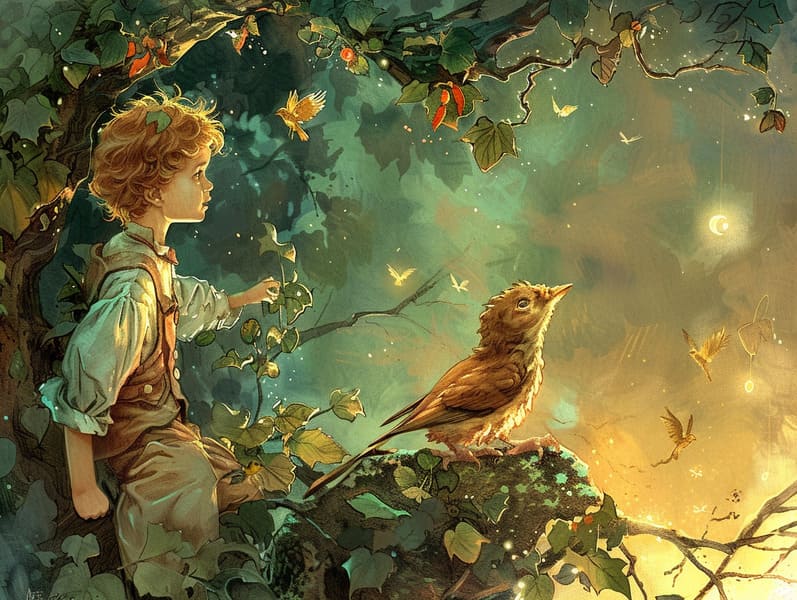The Birth of Traditional Fairy Tales with Its Endless Wonder.
The Birth of Traditional Fairy Tales with Its Endless Wonder.
Blog Article

Old fairy tales have legendary status. These stories have been shared from one generation to the next long before they were ever documented. They emerged from a variety of cultures, including European traditions. They were initially told among older generations, often carrying themes and messages reflective of the societal norms and beliefs of the time.
The Grimm brothers, Jacob and Wilhelm (the Grimm brothers), were among the first to compile and publish many of these beloved narratives. Their anthology, "Grimm's Folk Tales," included stories like "Cinderella," "The Bread Crumb Trail," and "The True Story of Snow White," which have since become hallmarks in the world of children's fairy tales. Similarly, Hans Andersen's fanciful narratives, such as "The Story of the Little Mermaid," and "The Ugly Duckling," have gained the love worldwide, guaranteeing their place in the pantheon of iconic fairy tales.
Even though they are old, traditional fairy tales remain as relevant as ever, especially as children's bedtime stories. These enchanting tales are now available in different formats, including artistically illustrated books, delightful animations, and internet fairy tales.
Their enduring popularity can be traced to several captivating elements:
Crucial Morals: Old fairy tales often provide important moral lessons. Fairy tales like "The Tale of the Boy Who Cried Wolf" teach the importance of sincerity, while "The Race of the Tortoise and the Hare" demonstrate the benefits of determination and unpretentiousness. These stories offer young ones clear distinctions between good and bad, shaping their moral compass in a mild yet important way.
Empathy and Awareness: Ancient fairy tales frequently showcase figures facing struggles and tests, prompting young listeners to relate with their struggles and encourage their triumphs. For instance, "The Story of Beauty and the Beast" highlights the necessity of appreciating inner worth to understand the true nature of a character, fostering kindness and discernment.
Cultural Awareness: Many classic fairy tales are steeped in the cultural contexts from which they sprang. Understanding these stories can provide informative snapshots into different historical contexts, fostering a sense of global insight and comprehension.
Imagination and Innovation: The extraordinary elements in old fairy tales—mythical entities—kindle children’s inventiveness. These stories guide readers to otherworldly realms, revitalizing creative ideas and a sense of excitement that lasts a lifetime.
Old fairy tales are not only whimsical but also informative. They work as alluring tools in enhancing various thinking and feeling skills in young ones. When classic fairy tales are recited, they strengthen language proficiency by teaching new language items and sophisticated sentence structures. This practice also nurtures auditory skills and mental focus, as the young stay focused, enthusiastic to see what happens next.
Furthermore, analyzing the themes and characters of fairy tales can cultivate reasoning skills and thinking skills. Little ones are instructed to recognize patterns, anticipate outcomes, and grasp cause and effect. These contemplations also assist young ones articulate their thoughts and feelings, cultivating their emotional intelligence.
In today’s modern era, the prevalence here of web-based fairy tales has made these stories more available than ever. Digital sites and apps offer huge assortments of classic fairy tales that can be accessed or listened to anytime, anywhere. Fairy tales read out loud are particularly prevalent, providing an fascinating method for children to take part in these delightful tales. Spoken stories and read-to-me videos guide characters and settings to life, often augmented by mesmerizing harmonies and background music that raise the tale-telling adventure.
The enduring charm of classic fairy tales lies in their ability to transform to contemporary times while sustaining their core messages. Contemporary revisions of these tales often bring in more inclusive figures and modern settings, making them pertinent to today’s audience. However, the core values of valour, charity, and even-handedness remain unchanged, continuing to move listeners of all ages.
Fairy tales also offer a sense of coziness and homeliness. They feature a structured narrative with a recognizable beginning, middle, and end, often ending with the finalization of conflicts and the triumph of virtue over vice. This constancy can be heartening for children, allowing a sense of dependability in an dynamic world.
Timeless fairy tales continue to allure and educate new generations, maintaining their charm and importance in modern society. As bedtime stories for kids, they make available a perfect blend of captivation and insight, backing moral values, empathy, and creativity. The accessibility of digital storybooks and the likability of fairy tales voiced guarantee that these traditional fairy tales remain attainable to new generations.
By continuing and conveying these stories, we continue to glorify the rich tapestry of legends and cultural heritage. Whether you are enjoying a beautifully illustrated book, seeing a web-based library, or hearing an sound book, the magic of old fairy tales is always within reach. These tales demonstrate of the lasting strength of storytelling and its ability to unite us across epochs and places.
If you are delving into a vividly illustrated book, accessing a web-based library, or listening to an audiobook, the beauty of children's fairy tales is always within reach.
These narratives illustrate of the endless magic of stories and its ability to draw us together across epochs and places, weaving a spell that enchants and educates alike.